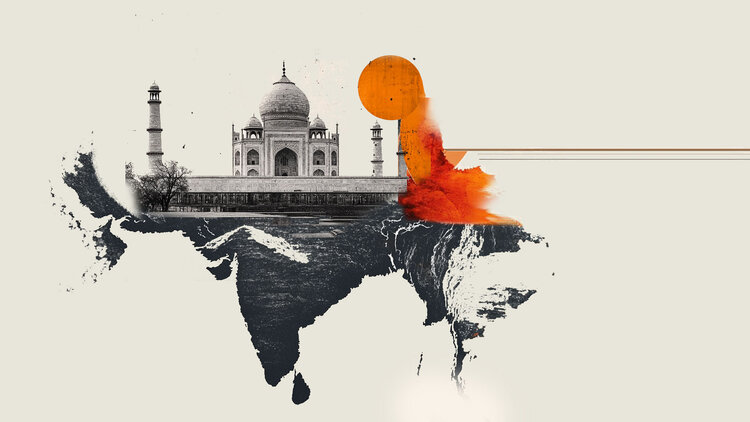- The Indian Rupee furthers its upward move in Friday’s Asian session.
- Positive developments in the trade talks and continued foreign inflows support the INR.
- Escalating geopolitical tensions after the Kashmir attack might cap the pair’s upside.
The Indian Rupee (INR) strengthens on Friday. The optimism surrounding US-India trade talks provides some support to the Indian currency. Currently, the 26% reciprocal tariff on India that the US imposed is on a 90-day pause. The suspension will expire on July 8. However, India does face a 10% tariff as other nations per the US trade policy. Furthermore, rising Foreign Institutional Investors (FII) inflows might contribute to the INR’s upside.
Nonetheless, heightened geopolitical tensions following a terror attack in Pahalgam, Jammu, and Kashmir might drag the Indian currency lower. Investors will keep an eye on the final reading of the US Michigan Consumer Sentiment later on Friday.
Indian Rupee edges higher amid escalating tensions between India and Pakistan
- According to the Reuters poll, the Reserve Bank of India is expected to cut the Repo Rate to 5.50% by end-Q3 (vs. 5.75% in March poll).
- India’s economy is to grow 6.3% in 2025-26 and 6.5% in 2026-27 (vs 6.5% and 6.5% in March poll), Reuters poll.
- Asked how US tariffs have affected business sentiment in India, 60% of economists, 21 of 35, said the impact was negative or very negative. Meanwhile, 14 economists said it was neutral.
- Pakistan has announced a series of retaliatory diplomatic moves against India and demanded evidence to back up the Indian government’s claims that Islamabad was involved in the Kashmir attack.
- US Treasury Secretary Scott Bessent has suggested that India is likely to become the first country to finalise a bilateral trade agreement with the US to avoid Trump’s reciprocal tariffs on Indian exports.
- Minneapolis Fed President Neel Kashkari said late Thursday that he is worried that with the uncertainty, businesses will do layoffs.
USD/INR’s bearish outlook remains in place
The Indian Rupee trades firmer on the day. The bearish tone of the USD/INR pair prevails as the pair is below the key 100-day Exponential Moving Average (EMA) on the daily timeframe. The 14-day Relative Strength Index (RSI) stands below the midline near 38.35, suggesting that further downside looks favorable.
The first downside target to watch is 84.85, the lower limit of the descending trend channel. Sustained trading below this level could open the door for a move towards 84.22, the low of November 25, 2024. The next contention level is seen at 84.08, the low of November 6, 2024.
On the bright side, the 100-day EMA at 85.82 acts as an immediate resistance level for USD/INR. A decisive break above the mentioned level could see a rise to 86.45, the upper boundary of the trend channel.
Indian Rupee FAQs
The Indian Rupee (INR) is one of the most sensitive currencies to external factors. The price of Crude Oil (the country is highly dependent on imported Oil), the value of the US Dollar – most trade is conducted in USD – and the level of foreign investment, are all influential. Direct intervention by the Reserve Bank of India (RBI) in FX markets to keep the exchange rate stable, as well as the level of interest rates set by the RBI, are further major influencing factors on the Rupee.
The Reserve Bank of India (RBI) actively intervenes in forex markets to maintain a stable exchange rate, to help facilitate trade. In addition, the RBI tries to maintain the inflation rate at its 4% target by adjusting interest rates. Higher interest rates usually strengthen the Rupee. This is due to the role of the ‘carry trade’ in which investors borrow in countries with lower interest rates so as to place their money in countries’ offering relatively higher interest rates and profit from the difference.
Macroeconomic factors that influence the value of the Rupee include inflation, interest rates, the economic growth rate (GDP), the balance of trade, and inflows from foreign investment. A higher growth rate can lead to more overseas investment, pushing up demand for the Rupee. A less negative balance of trade will eventually lead to a stronger Rupee. Higher interest rates, especially real rates (interest rates less inflation) are also positive for the Rupee. A risk-on environment can lead to greater inflows of Foreign Direct and Indirect Investment (FDI and FII), which also benefit the Rupee.
Higher inflation, particularly, if it is comparatively higher than India’s peers, is generally negative for the currency as it reflects devaluation through oversupply. Inflation also increases the cost of exports, leading to more Rupees being sold to purchase foreign imports, which is Rupee-negative. At the same time, higher inflation usually leads to the Reserve Bank of India (RBI) raising interest rates and this can be positive for the Rupee, due to increased demand from international investors. The opposite effect is true of lower inflation.

